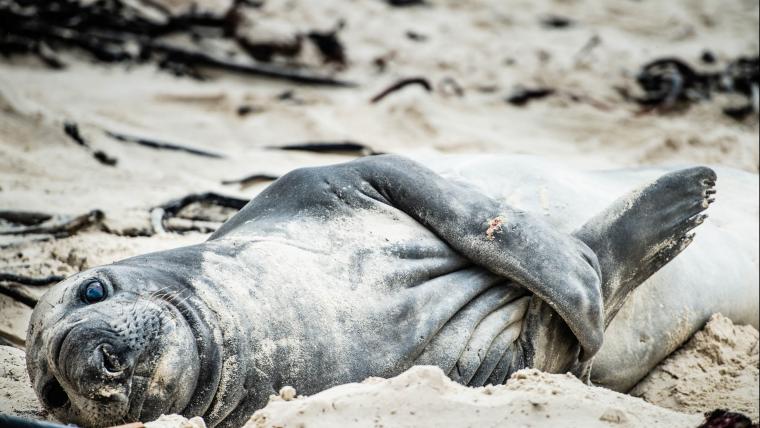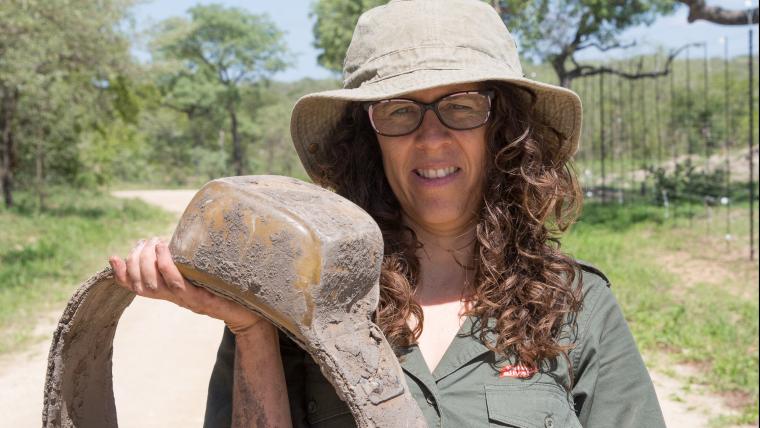
How did an elephant seal land on Cape Town’s shores?
A strange creature arrives on South African shores every year. He’s big. He’s bumbling. He’s Buffel, a southern elephant seal. Annually, the mammals seek safety on land to shed their old fur and grow a new coat. The process can take up to a month. They usually gather on sub-Antarctic and Antarctic islands in large colonies. But Buffel is an anomaly. Alone, this seal travels thousands of kilometres to moult on our West Coast.
The first sighting of Buffel was in 2014 in Buffels Bay, hence his nickname. To track the seal’s movements, the Department of Environmental Affairs tagged him as number 16577. Where he’s from remains a mystery, but a scar above Buffel’s eye hints at a tumultuous journey. His closest possible home is Marion Island, nearly 2 000 kilometres away. But clearly, Buffel has a preference for our coastline. He’s since returned to Kommetjie, Paternoster, and Duiker Island, just off Cape Point. Earlier this year, Buffel plonked himself on the beach at Fish Hoek for just over three weeks. He did little else but moult and chill.
Buffel’s time in Fish Hoek naturally attracted curiosity, with many flocking to the beach to snap his photo. Locals cordoned off his spot to give him his space. As the largest of their species – males can weigh up to 4 000 kilograms – it’s best to steer clear of southern elephant seals. But Buffel is irresistible, and has become somewhat of a celebrity in South Africa. While we can appreciate his presence, we must respect him too. Our shores belong to every creature.






























Please sign in to leave a comment